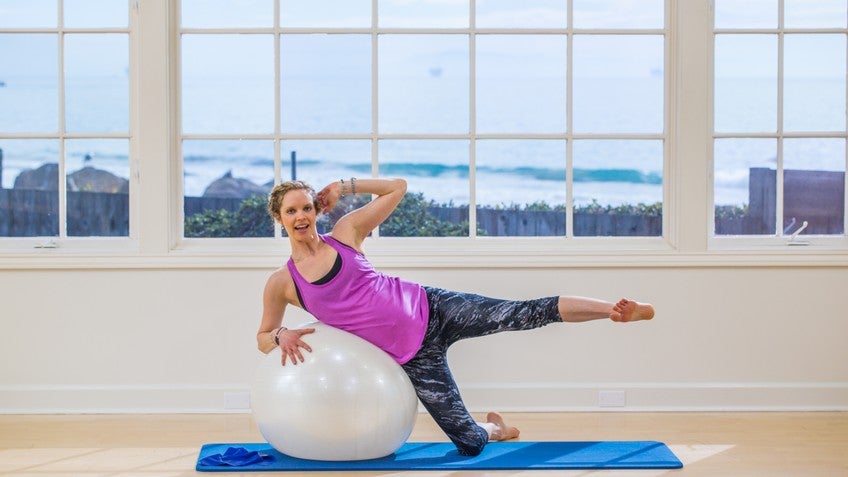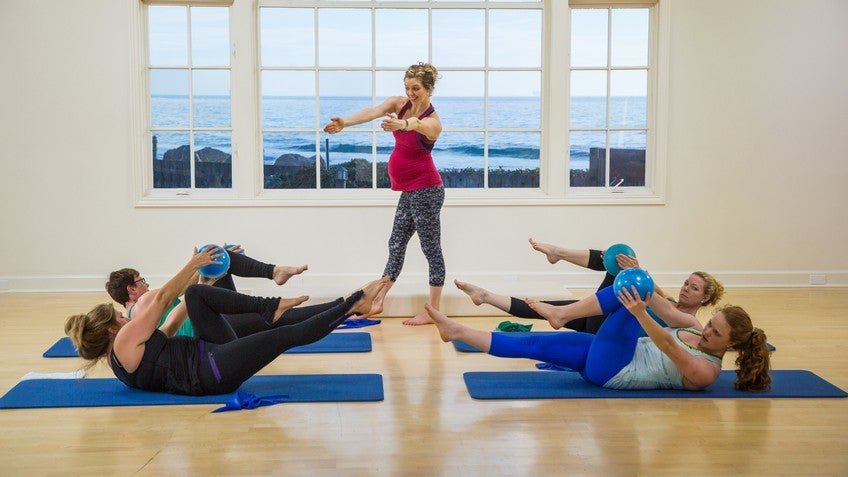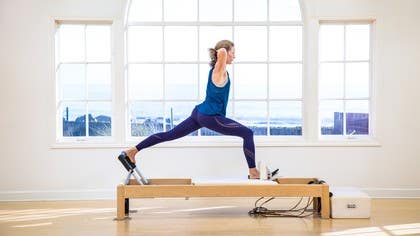
Trimester by Trimester Guide to Prenatal Pilates
Throughout the nine-plus months that you’re expecting, your body is in a constant state of flux. One day, you can barely get out of bed, subsisting on a diet of saltines, and the next, you’re feeling energetic and craving something super random, like salad with sardines.
Just like your body is changing, so should your prenatal Pilates practice. “As your uterus expands, your center of gravity is continually shifting, and the way you feel is changing,” says Melissa Connolly, a Pilates instructor on Pilates Anytime and a Balanced Body faculty member.
Although you’re always going to be looking to achieve balanced muscle development, as well as more stability and body awareness in your prenatal Pilates workout, it’s important to listen to your body and modify accordingly, Melissa says.
“Know that there are some exercises you can’t do while pregnant, but there are also a lot you can do,” she adds. “Be mindful and moderate—and don’t push yourself.”
But exactly when is it okay to do what? We’re breaking it down for you below.
Your Trimester-by-Trimester Guide to Prenatal Pilates
First Trimester
Welcome to pregnancy! Although chances are, you’re probably not “showing” much on the outside, you’re starting to feel it — big time — on the inside.
“Although nothing is going to hurt or harm the pregnant woman or the baby during the first trimester [phew!], this isn’t the time to push yourself or go up a level,” Melissa advises.
MELISSA’S TOP TIPS FOR TRIMESTER #1:
Speak Up.
At this point, clients tend to be timid about approaching the Pilates teacher to let them know they’re pregnant. The good news is that there’s nothing specific that you can’t do just yet, but your teacher can educate you and encourage you to listen to your body.
Be Present.
Notice how you’re feeling, and start to become more in tune with your body. If you feel tired or nauseous, it may be wise to avoid inversions (like Short Spine Massage), Melissa suggests.
Go Back to Basics.
Now is a good time to focus on your Pilates foundations, especially when it comes to breathing and stabilization.
Be More Moderate with Your Spring Choices.
If you choose to do Reformer Pilates during pregnancy, work with a heavier spring for stability exercises. If you’re doing leg or arm work, go lighter.
Second Trimester
Although your energy and stamina are probably back up, your body is starting to shift. “Your weight and center of balance are changing, your lumbar curve is greater, your chest might be forward, ” Melissa explains. “This is when you need to start making modifications and adjustments, to find the strength and stability to support your joints as they are now.”MELISSA’S TOP TIPS FOR TRIMESTER #2:
Limit Supine Work.
When you lie on your back during the second trimester, the uterus compresses the inferior vena cava and the aorta, restricting blood flow to the baby and making the mama-to-be feel dizzy. Try to keep supine work to just a few minutes at a time. Modify with side-lying, seated or standing work.
Avoid Lying on Your Belly.
It’s not recommended for obvious reasons—there’s a baby in the way!— and it might not feel comfortable. Modify by changing your position.
Enlist the Right Props.
A wedge is a good way to modify supine work (on your back), say on the Reformer during Footwork, or on the mat as well..
Er On the Side of Caution.
If you’re worried something might hurt the baby, or that it might not feel good to you, there are other things we can do to work those same muscles. Again, inversions, such as Balance Control on the Mat and Short Spine Massage on the Reformer, are good examples of things to limit or avoid.
Be Smart About Flexion.
Too much forward flexion (think: that crunching motion) can cause diastasis recti, where your abdominals split from too much pressure from the uterus or if your stomach muscles are too strong. Be proactive and stop flexion from a supine position (lying on your back), e.g., The Hundred, the Series of Five (Ab Series). But you can still do flexion in a seated position — a seated Spine Stretch or a Half Rollback on the Tower are good choices.
Twisting is Cool.
Rotation is a functional movement, whether you’re pregnant or not. Melissa recommends limiting resistance and to think of lifting and elongating while “hugging the baby” with your abdominal muscles.
Focus on the Deep Abdominals.
You want to engage your abs just enough to support you and your back. Honing in on your transverse abdominis (your deepest abs) — can help with back pain.
Don't Overemphasize the Pelvic Floor.
You want to let it go a little during pregnancy. Bring awareness to the pelvic floor muscles through breath, and allow them to fully release between reps.
Third Trimester
It’s the homestretch! But you’re tired again—so tired. Heed Melissa’s advice: “Give yourself more permission to relax. Go back to the breathing work and focus on finding relaxation during your workout.”Although Melissa says to keep all of her tips from trimester two in full effect for this last one, here are a few more pointers to consider.
MELISSA’S TOP TIPS FOR TRIMESTER #3:
Go Wide.
Your stance will naturally be bigger, so you might need to have your legs in second position (turned out) instead of parallel.
Give the Chest and Back Some Extra TLC.
Your belly is growing, and so are your breasts, so there’s a tendency for the shoulders to round forward and for back pain to start creeping in. Do more chest openers (like Swan standing or seated on a Box) and back openers. Chest Expansion works double duty, as both a back and chest strengthener.
Don't Ignore Belly Button Pain.
It could signal a hernia, something Pilates can’t fix. It’s probably a good time to call your doctor.
Joints, Rejoice.
Pilates can help with joint pain since it helps promote circulation and works the muscles that support the joints. Although moving can help ease symptoms of the pregnancy-related condition known as pubic symphysis, sadly you won’t feel complete relief until baby arrives.
Relax Already.
Let go of any expectations or judgements of yourself, and do what feels good.
Comments
No comments yet. Be the first!














You need to be a subscriber to post a comment.
Please Log In or Create an Account to start your free trial.